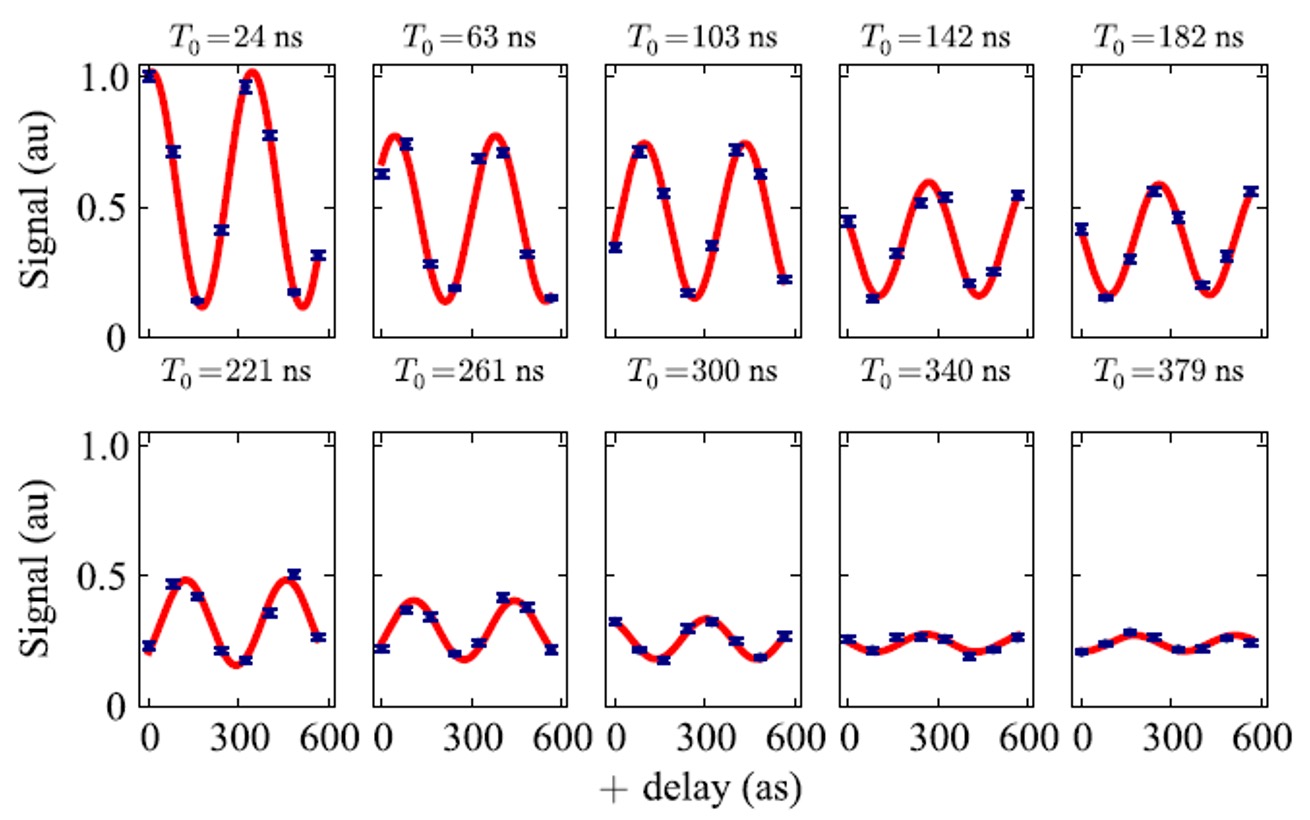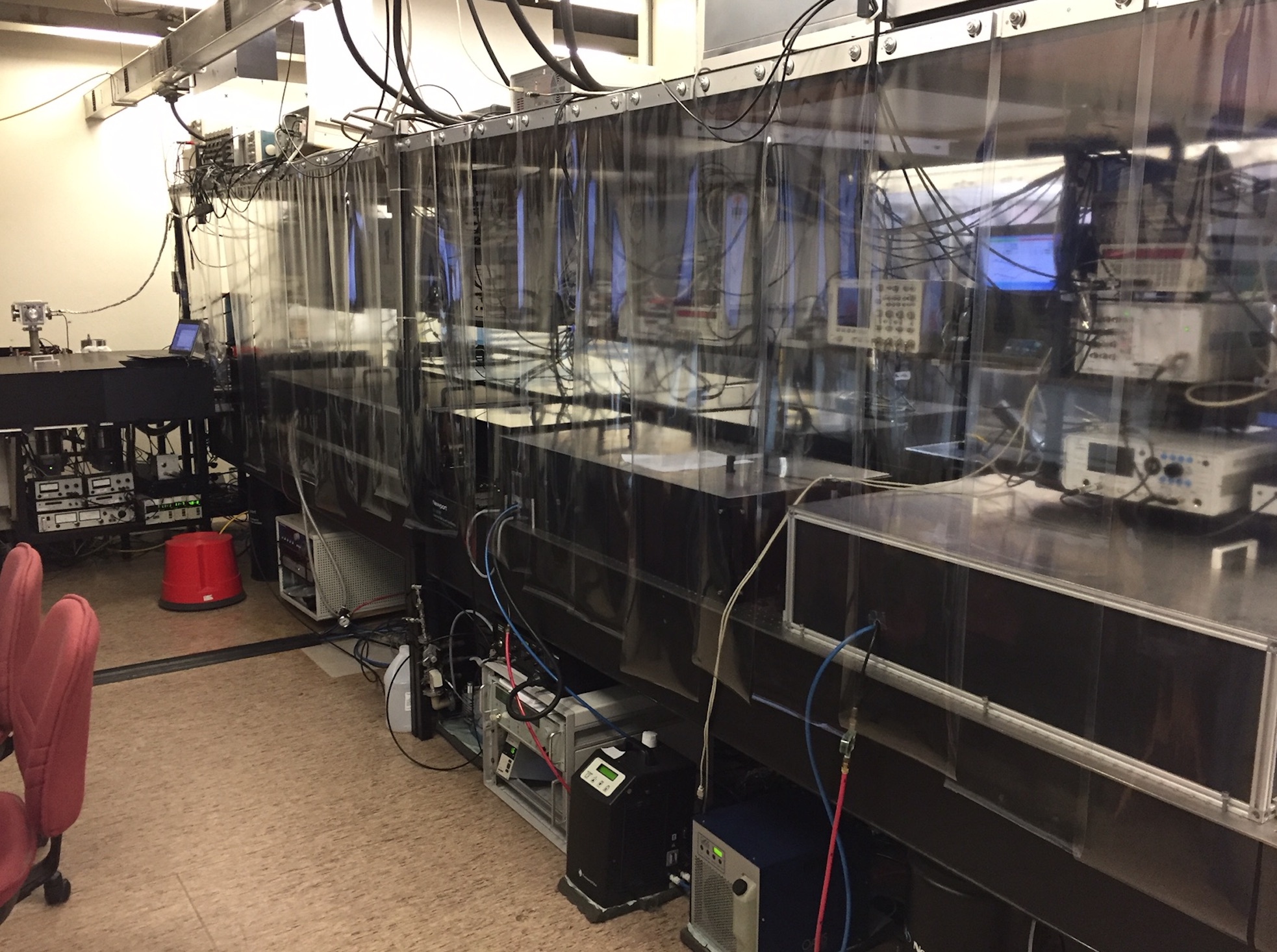
 |
|
 |
Molecular
Hydrogen EF-X spectroscopy in the deep-UV
| Molecular hydrogen is the
simplest neutral molecule, and has become an interesting
test ground for fundamental physics due to rapid
theoretical progress (see Phys.
Rev. Lett. 122, 103003 (2019)). Our ultimate target
is to determine the dissociation/ionization energy of H2
with about 20 kHz (or even 10 kHz), but for the moment a
more realistic target is 100 kHz to compare with the
calculations (currently at a level slightly below 1 MHz).
By
measuring different vibrational and rotational states
we can also put new limits on e.g. hypothetical 5th
forces. Theory works best for calculating the ionization/dissociation energy, so we need to measure that too. This requires a measurement of several intervals, as can be seen in the (simplified) energy level scheme below. We focus on the first step, the EF-X interval, while our collaborators at the ETH Zurich (prof. Merkt) and prof. Jungen (UCL, London) determine the ionization energy of the EF state(s). In Amsterdam the project is a collaboration of our group with prof. Ubachs and dr. Salumbides. |
 |
| Above: Simplified level scheme of H2, and the intervals that are required to determine the dissociation or ionization energy. We are measuring the X to EF interval, while the EF-ionization level is measured in the group of prof. Merkt at the ETH Zurich. |
We are performing precision Ramsey-comb spectroscopy on various transitions between the X ground state and EF excitated state in H2 at wavelengths from 202-210 nm. We use a LN2 cooled H2 beam, and counter-propagating laser beams beams to suppress the Doppler effect. We detect signal by ionization of the excited H2 molecules and a time-of-flight mass spectrometer. In 2018 we measured the V=0, J=1 to V=0, J=1 transition (we write "J" here for the rotational quantum number, but it is often denoted with "N") in ortho-hydrogen, and obtained an accuracy on the transition of 73 kHz (Phys. Rev. Lett 2018)), a 100-fold improvement over the previous determination. Together with a new measurement of the EF-ionization interval at the ETH Zurich and MQDT extrapolation, a new dissociation energy was determined (Phys. Rev. Lett. 2019) which agrees well with the latest theoretical calculations. Below you can see the schematic of the setup, the Ramsey-comb signals and some photo's of the setup. Recently the Ramsey-comb laser setup has been improved considerably (using the new ultra-stable frequency comb laser) and a new vacuum setup for this project has been built with an improved cryogenic valve (developed in the group of prof. Merkt at the ETH Zurich). Soon we hope to measure the X-EF transition in para-hydrogen (N=0) to determine the true (hyperfine-free) ground state energy, and also improve on the previous ortho-H2 measurement. |
 |
| Above: Schematic of the H2
Ramsey-comb spectroscopy setup. Below: photo of the vacuum system with the new improved H2 beam, including a new cryogenic valve developed in the group of prof. Merkt of the ETH Zurich. |
 |
 |
| Above: Ramsey-comb signal of
H2 (the 2018 measurement). Below, the Ramsey-comb laser system (no. 1). |
 |
We gratefully acknowledge financial
support from the following organizations:
 |
 |
 |
 |
Questions? Contact: k.s.e.eikema@vu.nl